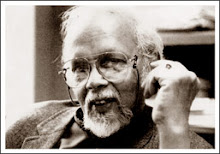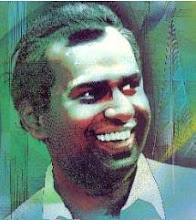Author: Hivos News
Sourvce: Hivos News
Date: 06/05/2009
How do you bring the different population groups of Sri Lanka closer to each other after more than thirty years of war? Theatre director Parakrama Niriella believes that it can be done through theatre.
“Things were different in the past”, reminisces Parakrama Niriella, director and founder of Jana Karaliya (Theatre of the People in Sinhalese). “In the 1970s I used to work as a typist on the civil staff of the Navy. In those days about 90 percent of all the employees there were Tamil. Sinhalese and Tamils had been living together peacefully for thousands of years. At the time of my first play, which was staged in 1976 at the National Drama Festival, there were eighteen Sinhalese and six Tamil plays. That was normal in those days. But ever since the war between the Army and the Tamil Tigers started in 1983, Sinhalese, Tamils and Muslims have been living in total isolation from each other.”
Truce
In 2002 the Army and the Tamil Tigers declared a truce. “I thought that this was the time to show that we can live together”, says Niriella, who since 1976 has built up an internationally renowned career as theatre director, both in traditional theatre as well as in socially engaged street drama. This was the beginning of Jana Karaliya, a theatre group which staged plays both in Sinhalese and in Tamil, with actors from both these population groups. “It was definitely not easy in the beginning. We had a hard time recruiting Tamil actors. Of the 300 who auditioned only seven w ere Tamils. We took on two of them, and the rest we recruited via Tamil friends and through workshops held in the Tamil areas. A third of the final cast, a total of 25 young men and women, is now Tamil. Alas we have still not yet succeeded in getting Muslims to join the group, but we keep on working at it.”
ere Tamils. We took on two of them, and the rest we recruited via Tamil friends and through workshops held in the Tamil areas. A third of the final cast, a total of 25 young men and women, is now Tamil. Alas we have still not yet succeeded in getting Muslims to join the group, but we keep on working at it.”
First Tour
With the support of various overseas donors a large tent was bought which could seat a good 800 spectators. In 2004 Jana Karaliya set out on its first tour. “Many Sinhalese saw us as traitors, we were accused of ‘Tiger whitewashing’,” says Parakrama Niriella. This criticism fell away in time. “Very few Sinhalese in Sri Lanka can speak Tamil. It was greatly appreciated in Jaffna, the most important city in Tamil territory, that our actors could do so. At first the spectators could not believe it. In the Sinhalese territories the spectators sometimes started whole discussions during the play when they noticed from the accent Tamil actors were performing. Many Sinhalese under the age of thirty have never even spoken to a Tamil. So our mixed theatre company was part of the message: it is possible to live and work together. Our plays also have a message, a deeper moral. They show, for example, that you must take responsibility yourself and that those in power should listen to the people.”
Own Stories
Jana Karaliya not only brings innovative theatre to the countryside but also gives workshops, mainly to schoolchildren. Parakrama Niriella: “We transform their stories into a play which we stage together. In this way they see how they can solve certain problems and they gain more self-confidence. Last year we held a workshop with a group of Sinhalese and Muslim women in the countryside. Politicians had promised them a better water supply, but they had been deceived. By acting out the story and developing it from there, the women came to the conclusion that they first had to unite the whole community. They would then be able to protest with a better chance of success. Great, isn’t it, that theatre can bring about such a result?”




































No comments:
Post a Comment